
 Larry Fisher
The Hockey Writers
Larry Fisher
The Hockey Writers
44
Reads
0
Comments
2020 NHL Draft: Fisher’s Final Rankings for WHL
- Fisher’s Top 500 Final Rankings
- Final Rankings for Overagers
- Final Rankings for Goaltenders
- Final Rankings for Defencemen
- Final Rankings for Forwards
This series is further analyzing my final rankings for the 2020 NHL Draft by position, by league and by country.
Today we shift the focus to the leagues — starting with the WHL, which is my wheelhouse and primary scouting region for FC Hockey being based in Kelowna, B.C. I’ve had live viewings for most these prospects over the past couple seasons and plenty of video review as well as networking to help draw these conclusions.
I’ll provide the totals within my top 500, within my draft range (top 217), and within my first round, followed by the full lists and finishing with my thoughts.
Without further ado, here are my final rankings for WHL prospects in the 2020 NHL Entry Draft:
TOTAL: 77
DRAFT RANGE: 30
FIRST ROUND: 4
17) Connor Zary (LC, Canada, Kamloops WHL)
18) Seth Jarvis (RW, Canada, Portland WHL)
22) Kaiden Guhle (LD, Canada, Prince Albert WHL)
25) Braden Schneider (RD, Canada, Brandon WHL)
50) Jake Neighbours (LW, Canada, Edmonton WHL)
51) Ridly Greig (LC/LW, Canada, Brandon WHL)
59) Pavel Novak (RW, Czech Republic, Kelowna WHL)
60) Ozzy Wiesblatt (RC/RW, Canada, Prince Albert WHL)
61) Tristen Robins (RC, Canada, Saskatoon WHL)
67) Justin Sourdif (RW, Canada, Vancouver WHL)
68) Jack Finley (RC, Canada, Spokane WHL)
80) Daemon Hunt (LD, Canada, Moose Jaw WHL)
81) Connor McClennon (RW, Canada, Winnipeg WHL)
94) Alex Cotton (RD, Canada, Lethbridge WHL, overager)
100) Kasper Puutio (RD, Finland, Everett WHL)
101) Ronan Seeley (LD, Canada, Everett WHL)
108) Cross Hanas (LW, USA/Canada, Portland WHL)
123) Christoffer Sedoff (LD, Finland, Red Deer WHL)
127) Dylan Garand (G, Canada, Kamloops WHL)
138) Simon Kubicek (RD, Czech Republic, Seattle WHL)
139) Luke Prokop (RD, Canada, Calgary WHL)
184) Simon Knak (RW, Switzerland, Portland WHL)
185) Michal Gut (LC, Czech Republic, Everett WHL)
186) Kyle Crnkovic (LW, Canada, Saskatoon WHL)
196) Lukas Svejkovsky (RW/RC, USA/Czech Republic, Medicine Hat WHL)
197) Cole Shepard (LW/LC, Canada, Vancouver WHL)
198) Landon Kosior (RD, Canada, Prince Albert WHL)
215) Daniel Baker (LD, Canada, Medicine Hat WHL, overager)
216) Gage Goncalves (LC, Canada, Everett WHL, overager)
217) Luke Toporowski (LW, USA, Spokane WHL, overager)
230) Danila Palivko (LD, Belarus, Lethbridge WHL)
231) Oliver Okuliar (LW, Slovakia, Lethbridge WHL, overager)
232) Brock Gould (G, USA, Moose Jaw WHL)
239) Josh Pillar (RC/RW, Canada, Kamloops WHL)
240) Ben King (RC/RW, Canada, Red Deer WHL)
241) Owen Pederson (LW, Canada, Winnipeg WHL)
260) Robbie Fromm-Delorme (RW, Canada, Portland WHL)
318) Ilya Usau (LC, Belarus/USA, Prince Albert WHL, overager)
319) Bear Hughes (RC, USA, Spokane WHL, overager)
320) Taylor Gauthier (G, Canada, Prince George WHL, overager)
321) Garin Bjorklund (G, Canada, Medicine Hat WHL)
322) Carter Souch (LW, Canada, Edmonton WHL)
323) Logan Dowhaniuk (LD, Canada, Edmonton WHL)
324) Benjamin Zloty (LD, Canada, Winnipeg WHL)
325) Ryker Evans (LD, Canada, Regina WHL)
387) Keanu Derungs (LW, Switzerland, Victoria WHL)
388) Tarun Fizer (RW, Canada, Victoria WHL, overager)
389) Logan Barlage (RC/RW, Canada, Lethbridge WHL, overager)
390) Tristen Nielsen (LW/LC, Canada, Vancouver WHL, overager)
391) Josh Williams (RW, Canada, Edmonton WHL, overager)
392) Ben McCartney (LW, Canada, Brandon WHL, overager)
393) Eli Zummack (RW/RC, Canada, Spokane WHL, overager)
394) Jaydon Dureau (LW, Canada, Portland WHL, overager)
395) Jonas Brondberg (LD, Denmark, Portland WHL, overager)
412) Rhett Rhinehart (RD, Canada, Saskatoon WHL)
413) Tyrel Bauer (RD, Canada, Seattle WHL)
431) Martin Lang (LW, Czech Republic, Moose Jaw WHL, overager)
432) Vladimir Alistrov (LW, Belarus, Edmonton WHL, overager)
433) Jonathan Brinkman (LW, Denmark, Medicine Hat WHL, overager)
434) Phillip Schultz (LC/LW, Denmark, Victoria WHL, overager)
440) Payton Mount (RW, Canada, Seattle WHL)
441) Matthew Rempe (RC, Canada, Seattle WHL)
461) Eric Van Impe (RD, Canada, Medicine Hat WHL)
462) Aidan De La Gorgendiere (LD, Canada, Saskatoon WHL)
463) Roman Basran (G, Canada, Kelowna WHL, overager)
464) Bryan Thomson (G, Canada, Lethbridge WHL)
465) Brayden Peters (G, Canada, Calgary WHL)
485) Cade McNelly (LD, Canada, Seattle WHL)
486) Chad Nychuk (LD, Canada, Brandon WHL, overager)
487) Orrin Centazzo (LW/LC, Canada, Kamloops WHL, overager)
488) Ryan Chyzowski (LW, Canada, Medicine Hat WHL, overager)
489) David Kope (RW, Canada, Edmonton/Kelowna WHL, overager)
490) Holden Katzalay (RC, Canada, Vancouver WHL, overager)
491) Michael Horon (LW, Canada, Prince Albert WHL, overager)
492) Noah Boyko (RC, Canada, Lethbridge WHL)
493) Jakob Brook (RW/LW, Canada, Regina WHL)
494) Kyrell Sopotyk (LW, Canada, Kamloops WHL)
Fisher’s Final Thoughts
Starting in the first round, there two close battles to be the WHL’s top forward and top defenceman for 2020.
Connor Zary (17) and Seth Jarvis (18) are neck-and-neck for me as the clear top forwards. Jarvis is more dynamic and might have more offensive upside, but Zary has a real swagger and intangibles that make me think he’ll be an impact player at the NHL level.
I don’t think Jarvis will get to Matt Barzal’s level and I do think Zary could be a Bo Horvat type as a second-line centre that leads by example. For a fantasy league, I’d probably pick Jarvis. For the best chance at the Stanley Cup, I’ll still take Zary — he’s a gamer!
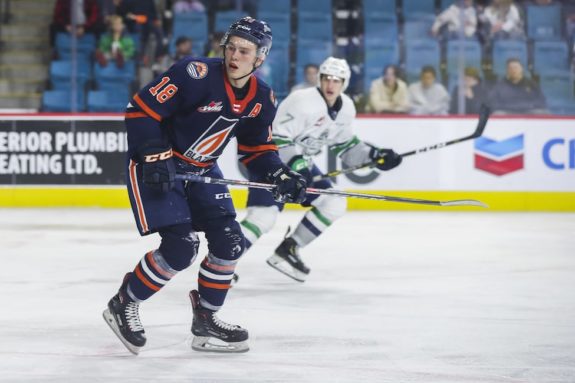
Kaiden Guhle (22) and Braden Schneider (25) should both be solid second-pairing defenders in the NHL. I don’t think either of them will patrol a top pairing, but they have No. 3 upside and both have a fairly high floor that should see them become No. 4s — perhaps sooner than later.
For Schneider, in particular, he is an older prospect for this draft class and is further along in his development. What you see is what you get with him — I see Schneider as a Travis Hamonic clone, coming from the same junior program in Brandon.
I see Guhle having more room for growth in his game — he is a bit rawer with a bit higher ceiling. Guhle could be a poor man’s Dion Phaneuf as a strong skater and hard-hitter with a heavy slapshot.
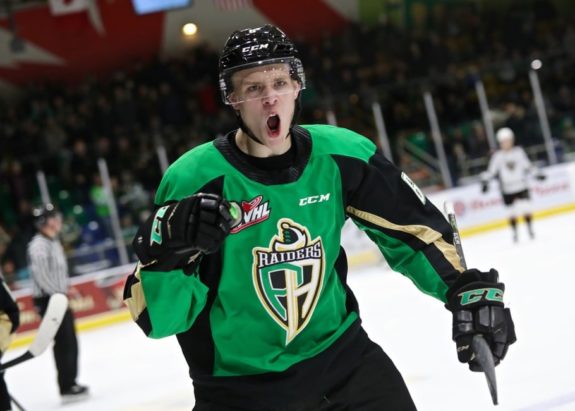
I have five forwards in my second round and I might be too low on the top two — those being Jake Neighbours (50) and Ridly Greig (51), who could both be first-round picks and have been ranked or mocked in the top 31 by some connected scouts and media members. I like both players, they are character guys that will help their teams win, but I was a little lower on them because I don’t see a ton of offensive upside. I think they will be middle-six complementary contributors throughout their careers.
Neighbours will chip in his share of goals — from being around the net, thanks to his hockey sense and determination — but he won’t be a big scorer as a pro. Think 20 goals, 40 points consistently for a decade.
Greig isn’t as polished in the present and it’s harder to tell what he’ll be as a pro. Some see a poor man’s Jonathan Toews. Some see more of a Brad Marchand since he plays the game on the edge as an antagonist of sorts. Greig is one of the younger prospects in this draft class as an August birthdate, so perhaps he can get to that level in the years to come, but I’ve tempered my expectations into thinking Greig will be a quality third-liner with similar statistical potential to Neighbours. I could see more variation in Greig’s output from one season to the next — I don’t think he’ll be as consistent as Neighbours.
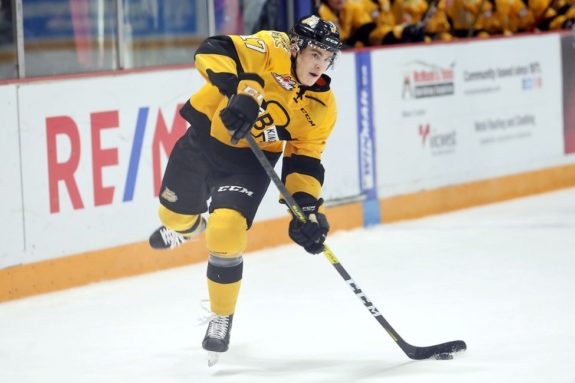
At the end of my second round, I have three WHL forwards that are undersized but skilled enough to be steals outside the top 50 — those being Pavel Novak (59), Ozzy Wiesblatt (60) and Tristen Robins (61). They were all offensive catalysts for their clubs — Kelowna, Prince Albert and Saskatoon, respectively — and it’s debatable whether their talents will translate to the NHL since they are on the small side and not the nicest skaters. Keyword there being “nicest” because all three are fast enough — quick with both their feet and their minds. I don’t think skating will hold them back, but I know some NHL scouts see that as the knock for all three — along with their size.
Robins surged in the second half to become a riser in most rankings and I’ve compared him to Brayden Point, who was a third-round steal for Tampa Bay. NHL teams might be on to Robins by now and he could go quite a bit higher than I have him ranked. I’m a fan of all three, with Novak reminding me of a Tomas Tatar type who finds a way to factor into the offence almost every night, while Wiesblatt is a real go-getter that may not be denied — similar, in that sense, to another Montreal forward in Brendan Gallagher.
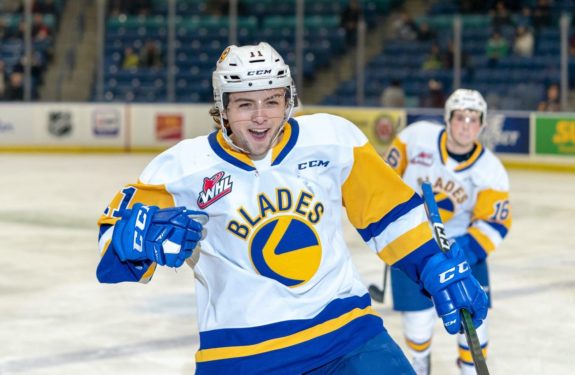
I have four more WHLers in my third round — three forwards and a defenceman. The top two are certainly second-round candidates in Vancouver power winger Justin Sourdif (67), who isn’t as physical as Evander Kane but has that explosive element, and Spokane centre Jack Finley (68), who is 6-foot-6 with a strong two-way game and pretty good playmaking ability.
Finley also had success as a net-front presence on the power play and he is even younger than Greig with a September birthdate. Finley can play in all situations and should be able to carve out a career, but his offensive upside is a matter of debate again. I’d like to see him get meaner and play a heavier game like Adam Lowry, but perhaps he’ll develop into more of a poor man’s Ryan Johansen.
Sourdif, like Kane, can be a frustrating player to watch at times because you know he’s capable of more — capable of being a difference-maker when he’s fully engaged. Sourdif left me wanting more in my live viewings but came on stronger down the stretch in making the highlight reel with a few “wow” moments. There is a player in Sourdif, but he needs to find that motivation to be a consistent force. If that comes with maturity, Sourdif could become a productive top-six forward in the NHL — a less physical Kane.
Daemon Hunt (80) was sidelined for much of his draft year following a fluke injury — his forearm got sliced by a skate blade — and he didn’t have much of a supporting cast to work with in Moose Jaw, especially after the Warriors traded away 2019 first-rounder Brayden Tracey. Hunt has decent upside, though I was never as high on him as some — NHL Central Scouting originally listed Hunt as an A-level prospect and potential first-round pick. Hunt was healthy again at the end of the season and I do believe he would have raised his stock by playing a fairly big role for Canada at the under-18 worlds that were cancelled by COVID. But, personally, I wouldn’t feel comfortable picking Hunt in the second round from what I’ve seen to date.
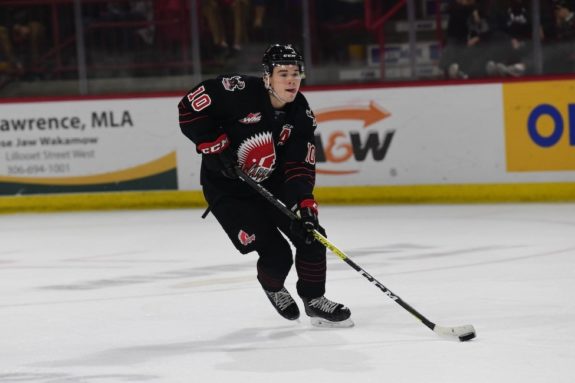
Connor McClennon (81) was gaining momentum when he went down to a broken collarbone that prematurely ended his draft year. Out of sight and out of mind, McClennon was a faller for me, but I had him as a first-rounder (28) in my preseason rankings and saw shades of Jordan Eberle as an opportunistic scorer. I could totally see McClennon among the WHL’s leading scorers next season, but I’m not as high on his NHL potential as I once was — with size and skating among the concerns with him too. Worth noting, McClennon wasn’t much of an offensive driver without Peyton Krebs to start the season.
My fourth round features three defencemen — including my top overager — and an intriguing forward from Texas. That being Cross Hanas (108), who scored a couple lacrosse goals for Portland but lacked consistency and was a bit too individualistic for my liking. In my live viewings on consecutive nights, Hanas went from invisible to very noticeable — and likeable. Like Sourdif, these are young players and some of Hanas’ tools are projectable to become a top-six forward in the NHL. I wouldn’t be shocked if some team reached for Hanas in the second or third round based on that upside.
The defenders include two Finnish imports in Kasper Puutio (100) and Christoffer Sedoff (123), plus Puutio’s teammate in Everett, Ronan Seeley (101), and that overager in Alex Cotton (94), who really broke out for Lethbridge. Cotton was almost as impactful as Calen Addison for the Hurricanes but reminds me more of Andrew Nielsen, who also developed in Lethbridge as a third-round pick from 2015 but has stalled in the AHL as of late. I don’t know if Cotton can get past that level either, but I’m sure some team will take a chance on him in the third or fourth round because he is a 6-foot-2 righty that produced over a point per game (20 goals and 67 points in 63 games).
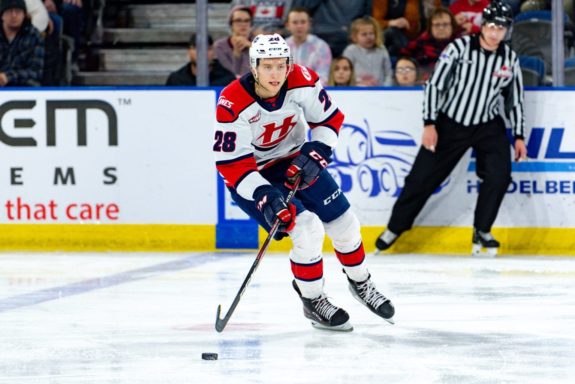
Puutio, who is planning to play in Finland this coming season rather than returning to Everett whenever the WHL resumes, was the first overall pick in last year’s CHL Import Draft for Swift Current but had even less to work with there than Hunt had in Moose Jaw. As difficult as it had to be adjusting to another new team and new country in getting traded to Everett, that move was beneficial for Puutio and his stock was trending up once he settled in as Seeley’s partner. That pairing was working well, with both of them being smooth skaters and smart puck-movers. Seeley reminds me of Troy Stecher and should take another step offensively next season.
Sedoff plays a safer game than Puutio and is more reliable defensively but might have some untapped offensive potential as a sophomore for Red Deer. Sedoff skated miles in my live viewing here in Kelowna, logging big minutes in all situations and covering a ton of ice. I liked what I saw and could see NHL teams liking him more than the online scouting community. He’s not flashy, but Sedoff is certainly effective.
I have three WHLers in my fifth round — the first and only Dub goaltender within my draft range, plus two more defenders — but it really should have been four again. If I could use a mulligan on my WHL rankings, I’d get undersized forward Lukas Svejkovsky back into this round — back into my top 150. As mentioned in my forward rankings, Svejkovsky was an inadvertent faller for me. I had him as high as 97 in February and he had been a pretty consistent fourth-rounder through March — he was 114 with those rankings publishing on March 9, right around the time the draft year came to a sudden halt — but slipped to 146, 184 and ultimately 196 due to some reshuffling on my part and through no fault of his own. Svejkovsky had been invited to USA Hockey’s World Junior camp and should be closer to 100 than 200 in hindsight.
Dylan Garand (127) has impressed me on multiple occasions — in multiple live viewings from the Kamloops-Kelowna rivalry — over the past two seasons. He’s not the tallest goaltender, but he’s as competitive as they come. Garand is a fitness freak and also a scholar. Teams will like both those attributes. He could end up being better than Connor Ingram and Dylan Ferguson, who were recent NHL draft picks from the Blazers. Kamloops has become a bit of a goaltending factory and the Blazers have 16-year-old Dylan Ernst on the way to continue that trend, but Garand could be the best of the bunch.

Simon Kubicek (138) and Luke Prokop (139) are both good-sized righties with good upside. Prokop is pretty raw and occasionally looks like a young Travis Sanheim. He also has a little bit of Guhle in his game, but he’s still a project at this point and thus likely to be selected in the middle rounds. Prokop is another one of those prospects that you watch and come away thinking there could be something there — not every night, but when he has a good night, it’s quite good.
Kubicek had a really good draft year for Seattle but was great at the World Juniors for the host Czechs. He made his mark at that tournament and likely left a lasting impression on the NHL scouts in attendance. The knock on Kubicek is his skating, but he thinks the game at a high level and thus stayed one step ahead during my live viewing. Like Sedoff, Seattle leaned on Kubicek and he was impactful at both ends. Kubicek is more offensive than Sedoff and has a booming shot, but Sedoff is a much stronger skater and just looked more like an NHLer in the making to my eyes.
My sixth round has three WHL forwards, including two imports that could “pop” as sophomores next season — those being Portland’s Simon Knak (184) and Everett’s Michal Gut (185). Knak looked more dangerous and more comfortable with Switzerland at the World Juniors, but Mike Johnston gets the most out of his imports with the Winterhawks — a list that includes fellow Swiss forwards Nino Niederreiter and Sven Baertschi. Knak was paired with Hanas on the wings in my live viewings and both were better on the second night, but Knak didn’t have his A-game that weekend in Kelowna. I do think it’ll click for him and he’ll start filling the net for Portland.
Gut stood out for the Czechs at last summer’s Hlinka Gretzky Cup and seemed to be flying under the radar in Everett. He didn’t get a lot of love or attention, but I liked what I saw in Gut’s offensive instincts and he is another August birthdate that could surge for the Silvertips now that he has a comfort level in North America.
Kyle Crnkovic (186) is closing out my sixth round, but I’m higher on him than that ranking suggests. Crnkovic and Robins were a dynamic duo for Saskatoon — feeding off each other, with Crnkovic generating his share of chances and proving to be a pretty good finisher too. Crnkovic is shorter than Robins and quite slight, so size is more of a concern for him, but he doesn’t shy away from the dirty areas and has a nose for the net. Crnkovic is one of those little guys that might just make it — and he did produce at an impressive point-per-game pace during his draft year (21 goals and 64 points in 63 games).
Svejkovsky (196) was one of six WHLers in my seventh round — including three more overagers rounding out my draft range. Svejkovsky wound up paired with his former Vancouver teammate Cole Shepard (197), with both of them having potential to put up bigger stat-lines next season. Shepard battled some injuries early on after showing plenty of promise as a 16-year-old with BCHL Penticton the previous season, but you could see the upside in his game.
Shepard, who was limited to 11 goals and 29 points over 50 games as a WHL rookie, is more of a sleeper than Svejkovsky, who had 13 goals and 28 points in 34 games with Medicine Hat following his trade from Vancouver — where Svejkovsky had five goals and 10 points in 18 games to start his draft year. In total, Svejkovsky finished with 18 goals and 38 points over 52 games, but he’s a good bet to blow up and produce more than a point per game next season.
Landon Kosior (198) showed flashes as a WHL rookie — an offensive-minded defenceman for Prince Albert. He’s a smooth skater and smart passer who will only get better as he continues to gain confidence at the junior level. He is another August birthdate with a lot of upside.
As for the overagers, Daniel Baker (215) became a force on Medicine Hat’s blue line — improving almost as much as Cotton in Lethbridge — while Gage Goncalves (216) and Luke Toporowski (217) took big steps for Everett and Spokane, respectively. Goncalves went from one goal in 67 games to 33 goals in 60 games, which speaks for itself, and Toporowski netted 29 goals as a more consistent threat than during his draft year when he managed 21 goals.
Outside my draft range, Lethbridge imports Danila Palivko (230) and overager Oliver Okuliar (231) both impressed and had an impact for the Hurricanes. Okuliar, in particular, with 33 goals in 55 games and a strong showing for Slovakia at the World Juniors. Palivko, a Belarusian defender, didn’t improve his numbers much as a sophomore in the WHL, but he passes the eye test and looks a little like Egor Zamula, who went undrafted but is now a legit prospect for the Flyers as a free-agent signing.
If I had a second mulligan, I’d use it here and make overager Taylor Gauthier (320) my second-ranked goaltender from the WHL ahead of Brock Gould (232). I’ve always liked Gauthier and had him ranked as a fourth-rounder for his draft year (114 in 2019, ironically just behind Toporowski at 111). Gauthier had a great year on a still bad Prince George team, so he deserves to get drafted the second time around but just missed my draft range. Gauthier will get a pro contract one way or the other.
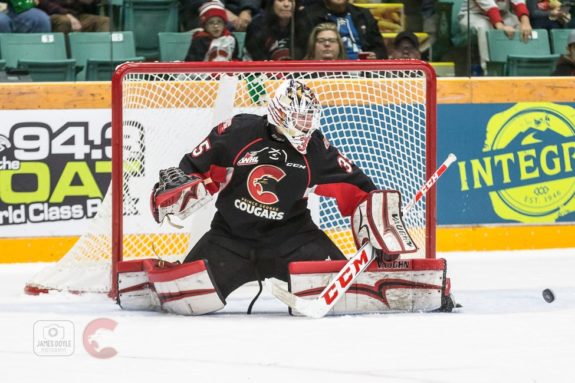
Gould is a fine young goalie too, with a projectable frame that NHL teams love to work with. His size is similar to Joel Hofer, who St. Louis drafted in the fourth round with a small sample size. Somebody could reach for Gould in that range too. He did get the CHL Top Prospects Game showcase, albeit with mixed reviews. I prefer Gould to Garin Bjorklund (321) among the top first-time eligible goaltenders from the Dub. That list also includes Lethbridge’s Bryan Thomson (464) and Calgary’s Brayden Peters (465), while Seattle’s Blake Lyda and Saskatoon’s Koen MacInnes just missed the cut for my top 500.
The only other WHL goaltender in my top 500 is overager Roman Basran (463), who had a difficult ending to his draft year — struggling in Kelowna’s tiebreaker loss to Kamloops — but had rebounded this season and would have benefitted from backstopping the Rockets as the Memorial Cup host. Basran didn’t get that opportunity to perform under pressure again and that might prevent him from getting drafted the second time around.
Reverting back to the order of my final rankings, the next four forwards from the WHL were all on the cusp of cracking my draft range and didn’t miss by much — those being Josh Pillar (239), Ben King (240), Owen Pederson (241) and Robbie Fromm-Delorme (260). Pillar and King are comparable players for me and could both make it as bottom-six forwards, Pederson can put the puck in the net and got the Peyton Krebs’ bump, while Fromm-Delorme impressed me in my live viewings as an energy player who always seemed to be around the puck. Fromm-Delorme has the motor, he just needs to develop the finishing ability.
Next up, a couple over-age forwards who were new to the WHL in Ilya Usau (318) and Bear Hughes (319). Usau produced 52 points (22 goals, 30 assists) in 58 games for Prince Albert and Hughes mustered 47 points (16 goals, 31 assists) in 61 games for Spokane. Hughes is really raw, looking a little lost and out of position at times but also looking dynamic when he has the puck or has a chance to make something happen. Usau was a good fit in P.A., not the nicest skater as a bit of a lumberer, but he has good offensive instincts and manages to make an impact — at least at the junior level. Both are projects despite being older prospects for 2020.
Carter Souch (322) is on the smaller side but is another kid that consistently creates offence. He is a catalyst for Edmonton and will put up big numbers before his junior career is through, but that won’t necessarily translate to pro. I see Souch as a high-scoring overager in the WHL who will be a candidate for a free-agent contract similar to Medicine Hat’s James Hamblin, who signed with AHL Bakersfield.
The next three defencemen are undersized but impressive in their own right — those being Edmonton’s Logan Dowhaniuk (323), Winnipeg’s Benjamin Zloty (234) and Regina’s Ryker Evans (325). They are all left-handed with similar skill-sets. Dowhaniuk and Evans are both 5-foot-11 and Zloty is just six-feet tall. I see them in the same light as Dawson Davidson and Conner McDonald, who were similar in size and ability — becoming real good WHLers but still being long-shots for the NHL.
There are 29 more WHLers outside my top 350, including 18 overagers to only 11 first-time eligibles. Of the overagers, 16 are forwards and two are defencemen, while the first-time eligibles are more balanced with six forwards and five defencemen.
The next name on the list is an intriguing one in Swiss forward Keanu Derungs (387), who showed flashes for Victoria and could put up much better numbers next season. He also looked very skilled when representing Switzerland internationally, including at last summer’s Hlinka Gretzky Cup. He’s not too far behind Knak in terms of talent among Swiss imports.
Then it’s a grouping of eight overagers in a row — forwards Tarun Fizer (388), Logan Barlage (389), Tristen Nielsen (390), Josh Williams (391), Ben McCartney (392), Eli Zummack (393) and Jaydon Dureau (394), plus Danish defender Jonas Brondberg (395). There are four more import forwards as the next grouping of overagers — Martin Lang (431), Vladimir Alistrov (432), Jonathan Brinkman (433) and Phillip Schultz (434).
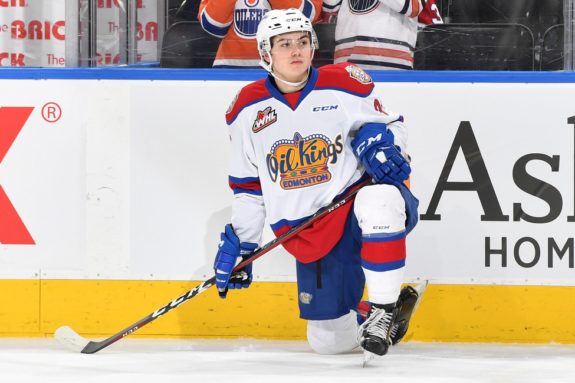
From that dozen, I’m expecting at least a few to get drafted and perhaps a handful — or a half-dozen. There are going to be some good pros amongst that group. Brondberg and Brinkman, who are both from Denmark, were new to the WHL this season, but I’ve been watching the other 10 for a couple seasons now and since their bantam draft year for most of them. They all deserve a look at the pro level — whether that means getting drafted, getting signed as free agents or getting invited to development camps and rookie tournaments. You’ll see a good number of them getting contracts in the coming years.
Rounding out the overagers are defenceman Chad Nychuk (486), plus a handful of forwards in Orrin Centazzo (487), Ryan Chyzowski (488), David Kope (489), Holden Katzalay (490) and Michael Horon (491). The first three are well established — Centazzo netted 44 goals (second most in the entire WHL) and Chyzowski tallied 34 times to rank 10th in that category — while the latter three are looking like late-bloomers to me. Kope has the size and tools but lacks consistency, Katzalay kept catching my eye in a live viewing that made me think he could turn into something, and Horon is more of a gut feeling that he could become another Brett Leason for Prince Albert as a double-overager who blows up offensively. That said, I would be fairly surprised if any of those six were selected in 2020.
Of the 10 remaining first-time eligibles to round out my WHL rankings, the next two have the best shot at getting drafted in Rhett Rhinehart (412) and Tyrel Bauer (413) as big, bruising right-handed defenders. Neither of them are sexy prospects, but they could turn into Cory Sarich and Brenden Dillon down the road. Rhinehart was traded to Saskatoon where Sarich played junior and Bauer is in Seattle where Dillon developed. They are all similar in size as well as their strengths, so I like those comparables.
Bauer is followed by two of his Seattle teammates in forwards Payton Mount (440) and Matthew Rempe (441). Mount is on the small side and somewhat similar to the aforementioned Souch, while Rempe is a monster at 6-foot-8 but doesn’t use his size to his advantage nearly enough. He doesn’t necessarily play a big man’s game and isn’t an overly intimidating presence — yet!
Next on the list are three defencemen in righty Eric Van Impe (461) and lefties Aidan De La Gorgendiere (462) and Cade McNelly (485). Van Impe is steady and solid, De La Gorgendiere has the offensive upside, and McNelly is as mean as he is nasty. McNelly threw the biggest hit of the draft year that I witnessed live in flattening Novak at centre ice in Kelowna — it was reminiscent of Scott Stevens on Paul Kariya — and McNelly came up swinging. He is one of the best fighters in the WHL as a real throwback player.
Lastly, a trio of forwards who could be just scratching the surface of their potential but are more likely to get drafted in 2021 as overagers — those being Lethbridge’s Noah Boyko (492), Regina’s Jakob Brook (493) and Kamloops’ Kyrell Sopotyk (494). Those three should take nice steps next season in becoming more prominent players for their respective WHL teams.
Get the latest NHL Draft & Prospect rankings, news and analysis
The post 2020 NHL Draft: Fisher’s Final Rankings for WHL appeared first on The Hockey Writers.
Popular Articles

















































 Blackhawks Chicago
Blackhawks Chicago Panthers Florida
Panthers Florida Penguins Pittsburgh
Penguins Pittsburgh Rangers New York
Rangers New York Avalanche Colorado
Avalanche Colorado Kings Los Angeles
Kings Los Angeles Maple Leafs Toronto
Maple Leafs Toronto Bruins Boston
Bruins Boston Capitals Washington
Capitals Washington Flames Calgary
Flames Calgary Oilers Edmonton
Oilers Edmonton Golden Knights Vegas
Golden Knights Vegas Senators Ottawa
Senators Ottawa Lightning Tampa Bay
Lightning Tampa Bay Flyers Philadelphia
Flyers Philadelphia Islanders New York
Islanders New York Sabres Buffalo
Sabres Buffalo Red Wings Detroit
Red Wings Detroit Devils New Jersey
Devils New Jersey Hurricanes Carolina
Hurricanes Carolina Blue Jackets Columbus
Blue Jackets Columbus Predators Nashville
Predators Nashville Stars Dallas
Stars Dallas Jets Winnipeg
Jets Winnipeg Wild Minnesota
Wild Minnesota Blues St. Louis
Blues St. Louis Mammoth Utah
Mammoth Utah Sharks San Jose
Sharks San Jose Ducks Anaheim
Ducks Anaheim Canucks Vancouver
Canucks Vancouver


